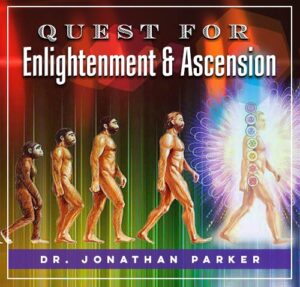How Do We Make Sense of the Universe’s Mysteries?

Before diving in, please note: This post is for informational purposes only. If you’d like to know more about how we approach topics, feel free to check out our friendly Disclaimer Page.
Hey there, amazing readers! 🖐️ Just a quick note: yes, we know there are a lot of ads here. Trust us, we get it—it’s not the prettiest look, but they help us keep this blog alive and kicking. Those pesky little ads cover the costs of all the behind-the-scenes magic, from hosting and tech stuff to creating content we hope you’ll love.
We’re committed to delivering quality posts, and your support (even just sticking around despite the ads) means everything to us. So, bear with us, and thanks for helping us keep the good vibes rolling. Now, on to the fun stuff! 😉
TRANSLATE BUTTON AT THE END OF THE ARTICLE
A Quick Overview
The universe is a vast and enigmatic expanse that has piqued human curiosity for centuries.
From the twinkling stars overhead to the depths of black holes, the cosmos presents mysteries that stir our imaginations and scientific inquiries.
So, how do we make sense of these mysteries?
In this article, we will embark on a journey through time and space, exploring humanity’s relentless quest to understand the universe.
We’ll delve into ancient explorations, the rise of scientific methodologies, and modern technologies that push the boundaries of our knowledge.
Buckle up; it’s going to be an enlightening ride!
Unveiling the Cosmos: A Journey Begins
When I think about our journey to understand the universe, I can’t help but feel a sense of wonder.
This quest dates back to the early civilizations, where stargazing became a pastime and a necessity.
Ancient cultures peered into the night sky, crafting stories and myths around the celestial bodies.
The Greeks had their constellations; the Mayans had their calendars.
It was their way of making sense of what seemed unfathomable.
Fast-forward to today, and we’ve come a long way.
Our telescopes and satellites are like the magic wands of the modern age, revealing secrets hidden in the dark canvas of space.
But it all began with simple observations.
Each star and planet became a piece of the grand puzzle.
We saw patterns, cycles, and rhythms.
This initial curiosity laid the groundwork for everything that followed.
Over time, people began asking deeper questions.
Why does the sun rise and set?
What are the stars made of?
These inquiries sparked the dawn of astronomy, a field that has evolved into sophisticated branches of astrophysics and cosmology.
Each generation has built on the knowledge of the last, creating a rich tapestry of discovery.
The universe, with its grandeur and mystery, is not just an academic subject; it’s personal.
Each question we ask brings us closer to understanding our place in the cosmos.
It’s a journey filled with excitement, frustration, and, ultimately, enlightenment.
The Ancient Quest: How Early Cultures Explored Space
Our journey through the cosmos started with the ancients, who used their eyes and intellect to explore the heavens.
The Babylonians, for example, were skilled astronomers who meticulously recorded celestial phenomena.
They developed early forms of astrology to predict seasonal changes, which were crucial for agriculture.
In contrast, the Greeks introduced a philosophical approach to astronomy.
Figures like Ptolemy and Aristotle proposed models of the universe that placed Earth at its center.
While their ideas were later proven incorrect, they paved the way for more accurate theories.
Explore the Path to Spirituality and Enlightenment – Start Here.
The quest for knowledge was driven by observation and speculation, a blend of science and philosophy.
Then there were the Polynesians, remarkable navigators who used the stars to guide their ocean voyages across the vast Pacific.
They had an intuitive understanding of celestial navigation, relying on the positions of stars and constellations to find their way.
Their journey was not just about exploration; it was about survival.
The ancient Egyptians also contributed to our understanding of the cosmos.
They aligned their pyramids with celestial bodies and developed a calendar based on the heliacal rising of Sirius.
Their reverence for the heavens illustrates how deeply interconnected humanity has been with the cosmos throughout history.
These early cultures didn’t just uncover facts; they built narratives.
They linked celestial events to earthly occurrences, creating a rich tapestry of mythology and understanding.
It’s fascinating to think about how their insights laid the groundwork for our modern scientific explorations.
The Power of Curiosity: Driving Scientific Discovery
Ah, curiosity—the fuel of innovation!
Without it, we would still be staring at the stars, wondering about their purpose.
The scientific method emerged as a structured approach to inquiry, allowing us to test hypotheses and develop theories based on evidence.
In the Renaissance, figures like Copernicus and Galileo challenged existing beliefs about the cosmos.
Copernicus proposed a heliocentric model, placing the sun at the center.
Galileo’s use of the telescope enabled him to observe Jupiter’s moons, providing evidence for Copernican theory.
Their boldness transformed our understanding of the universe.
As the centuries progressed, Isaac Newton’s laws of motion and gravity revolutionized science.
He provided mathematical frameworks that explained celestial motions.
Suddenly, the universe was not just a collection of mysteries; it became a predictable system governed by natural laws.
Curiosity has led to remarkable discoveries even in the modern era.
The advent of space exploration in the 20th century, marked by missions like Apollo 11, expanded our understanding of the cosmos dramatically.
Astronauts walked on the moon, and we sent probes to distant planets.
Each mission produced new knowledge, igniting further questions.
In this age of information, our curiosity is amplified by technology.
The internet connects us to a wealth of knowledge, allowing anyone with a thirst for understanding to dive deep into cosmic mysteries.
Online platforms enable citizen scientists to participate in research projects, sparking an era of collective exploration.
Telescopes and Beyond: Tools That Changed Everything
Imagine gazing at the night sky through a simple tube filled with glass lenses.
That’s how it all began.
The telescope, invented in the early 17th century, was a game-changer.
It allowed us to see celestial objects in unprecedented detail.
Suddenly, the universe transformed from an indistinct blur into a realm filled with fascinating detail.
Galileo’s improvements to the telescope opened our eyes to moons, rings, and craters.
He revealed that we were not alone in our cosmic neighborhood.
This was just the beginning.
As technology advanced, so did our ability to explore the universe.
Fast forward to the Hubble Space Telescope, launched in 1990, which has captured breathtaking images of distant galaxies, nebulae, and cosmic events.
Hubble’s ability to observe in various wavelengths has provided insights into the formation of stars and the expansion of the universe.
It’s like having a superpower for peeking into the unknown!
In addition to optical telescopes, we now have radio telescopes and space-based observatories.
Instruments like the Kepler Space Telescope have led to the discovery of thousands of exoplanets, captivating the imagination of scientists and dreamers alike.
Each discovery brings us one step closer to understanding our cosmic surroundings.
The tools we use to explore the universe are constantly evolving.
With the development of artificial intelligence and machine learning, we can analyze vast amounts of data, revealing patterns that our human brains might overlook.
These innovations empower us to decode secrets hidden in the fabric of the cosmos.
The Language of Light: What Stars Tell Us
Stars are like books in the library of the universe, each one telling a unique story.
By studying the light they emit, we glean information about their composition, temperature, and distance.
This process, known as spectroscopy, reveals the very essence of celestial bodies.
When light passes through a prism, it splits into a spectrum.
Each star has a distinct spectral fingerprint, allowing us to identify its elements.
Hydrogen, helium, and other elements emit specific wavelengths, helping us understand what stars are made of.
It’s like reading the ingredients on a cosmic menu!
Moreover, the colors of light can inform us about a star’s temperature.
Blue stars are hotter than red ones, while the brightness indicates distance.
This knowledge helps us map the universe and understand its structure.
It’s an incredible feat that allows us to piece together the cosmic puzzle.
Stellar evolution is another fascinating aspect.
Stars don’t last forever; they go through life cycles from birth to death.
Massive stars explode as supernovae, scattering elements across the cosmos.
This process plays a vital role in creating new stars, planets, and, ultimately, life.
By studying light from distant stars, we also glimpse the past.
The light we see from stars today may have traveled millions of years to reach us.
In essence, we’re looking back in time, connecting us to events that occurred long before humans walked the Earth.
Understanding the language of light not only enhances our knowledge of individual stars but also helps us grasp the broader workings of the universe.
It’s a beautiful dance of particles and waves, revealing the interconnectedness of all cosmic entities.
Cosmic Phenomena: Understanding Black Holes and Neutron Stars
The universe is filled with jaw-dropping phenomena, and black holes are among the most captivating.
These cosmic monsters have gravitational pulls so strong that not even light can escape.
The idea of something so powerful is both fascinating and a little terrifying!
Black holes form when massive stars exhaust their nuclear fuel and collapse under their own gravity.
They can be categorized into stellar and supermassive black holes.
Stellar black holes form from individual stars, while supermassive black holes, found at the centers of galaxies, can contain millions or even billions of solar masses.
Neutron stars, on the other hand, are the remnants of supernova explosions.
They are incredibly dense, with mass greater than that of the sun packed into a sphere only about 20 kilometers across.
Imagine a teaspoon of neutron star material weighing as much as a mountain!
Their extreme gravity causes fascinating phenomena like pulsars—rapidly rotating neutron stars emitting beams of radiation.
Both black holes and neutron stars challenge our understanding of physics.
They push the boundaries of general relativity, forcing scientists to rethink how gravity and quantum mechanics interact.
The mysteries surrounding these entities are a hot topic in modern astrophysics.
Researchers continue to probe the depths of these cosmic phenomena.
The Event Horizon Telescope, for instance, captured the first-ever image of a black hole in 2019.
It was a monumental achievement, showcasing how far we’ve come in understanding these mysterious objects.
By studying these extreme environments, we glean insights into the fundamental laws governing the universe.
Each discovery about black holes and neutron stars adds another piece to the cosmic jigsaw puzzle, weaving a narrative of our universe’s evolution.
The Role of Mathematics in Unlocking Mysteries
Mathematics is often seen as an abstract discipline, but in the context of the universe, it is the key.
The laws of physics are expressed through mathematical equations, allowing us to make sense of complex phenomena.
Think of math as the language of the universe—it speaks volumes about how things work.
From Newton’s laws of motion to Einstein’s theory of relativity, math provides the framework to describe the cosmos.
It allows us to model celestial movements, predict outcomes, and test theories.
Without math, our understanding of the universe would remain rudimentary.
One of the most striking examples is the use of mathematical models in cosmology.
These models help us understand the universe’s expansion, predicting how galaxies move apart.
The equations governing dark energy and dark matter allow us to explain the universe’s accelerated expansion.
Mathematics is also crucial in the field of quantum mechanics.
The behavior of particles at subatomic levels is governed by complex equations that challenge our intuition.
Yet, these equations also help us grasp the fundamental nature of reality.
Moreover, mathematics helps scientists formulate hypotheses and design experiments.
Data collected from telescopes and satellites often requires intricate statistical analysis to draw meaningful conclusions.
Math is the backbone of scientific inquiry, enabling us to test our understanding and refine our theories.
In essence, mathematics is the tool that helps us navigate the cosmic landscape.
It allows us to describe, predict, and understand phenomena that would otherwise remain elusive.
It’s a powerful ally in our quest to decode the mysteries of the universe.
The Big Bang Theory: The Universe’s Fantastic Origin
One of the most compelling narratives in cosmology is the Big Bang theory, which describes the origin of our universe.
According to this theory, the universe began as an infinitely dense point, approximately 13.8 billion years ago.
It expanded rapidly, creating the cosmos we know today.
This expansion is not just a notion; it’s backed by evidence.
Edwin Hubble’s observations in the 1920s showed that galaxies are moving away from us, a phenomenon known as redshift.
This discovery supported the idea of an expanding universe.
The Big Bang theory also explains the formation of cosmic structures.
After the initial explosion, matter cooled down, leading to the formation of atoms.
Over time, these atoms clumped together, creating stars and galaxies.
The universe’s evolution is a story of continuous change and growth.
Interestingly, the presence of cosmic microwave background radiation serves as a relic of the Big Bang.
This faint glow permeates the universe, a remnant of the hot, dense state from which everything emerged.
It provides a snapshot of the early universe and strengthens the Big Bang narrative.
While the Big Bang theory is widely accepted, it’s not without its questions.
Scientists continue to explore what came before the Big Bang and the ultimate fate of the universe.
Is it a cycle of expansion and contraction, or will it expand forever?
These questions keep the flame of curiosity alive, pushing us to explore further.
Understanding the Big Bang is not just about our origins; it shapes our perception of the universe.
It emphasizes the interconnectedness of all things and invites us to reflect on our place in the cosmic story.
Dark Matter and Dark Energy: The Invisible Universe
Did you know that about 95% of the universe is invisible?
It’s mind-boggling!
Dark matter and dark energy are among the most profound mysteries in cosmology.
While we can observe galaxies and stars, these elusive entities escape direct detection.
Dark matter is a form of matter that doesn’t emit or interact with electromagnetic radiation.
We can’t see it, but we can infer its existence through gravitational effects on visible matter.
For instance, galaxies rotate at speeds that should cause them to fly apart, yet they don’t.
Dark matter provides the additional mass needed to hold them together.
Dark energy, on the other hand, is even more mysterious.
It’s a force that drives the universe’s accelerated expansion.
While we can’t see or touch it, its effects are felt throughout the cosmos.
It’s as if dark energy is pushing galaxies apart, altering the very fabric of our universe.
The hunt for dark matter and dark energy is an ongoing endeavor.
Scientists use particle accelerators, observatories, and even sophisticated simulations to understand these phenomena better.
Each experiment brings us closer to a clearer picture of the universe’s composition.
Understanding dark matter and dark energy not only deepens our knowledge of the universe but also reshapes our view of reality.
It challenges our perceptions and invites us to embrace the unknown.
The universe is full of surprises, and these two elusive components are prime examples.
The Search for Extraterrestrial Life: Are We Alone?
The question of whether we are alone in the universe has captivated humanity for ages.
The search for extraterrestrial life is not just about finding aliens; it’s about understanding the conditions that foster life and our place within the cosmos.
Scientists focus on finding exoplanets—planets outside our solar system—in habitable zones where conditions might support life.
The Kepler mission has identified thousands of exoplanets, some of which bear similarities to Earth.
This has fueled hopes of discovering life beyond our planet.
Moreover, missions to Mars and the icy moons of Jupiter and Saturn aim to explore potential habitats for microbial life.
The discovery of extremophiles—organisms that thrive in extreme conditions on Earth—has expanded our definition of where life might exist.
The Fermi Paradox presents a fascinating puzzle.
If the universe is teeming with life, why haven’t we encountered any yet?
Various theories exist, ranging from the idea that advanced civilizations self-destruct to the possibility that they are simply too far away.
SETI (Search for Extraterrestrial Intelligence) employs radio telescopes to listen for signals from intelligent civilizations.
It’s like trying to catch whispers from distant neighbors in a vast cosmic neighborhood.
Each new discovery fuels excitement and speculation.
Whether or not we find extraterrestrial life, the journey itself illuminates our understanding of what it means to be human.
It connects us with the cosmos, reminding us of our shared origins and the potential for life beyond our planet.
Modern Technology: Innovations Leading the Way Forward
We live in an extraordinary time where technology is revolutionizing our exploration of the universe.
From powerful telescopes to advanced computer simulations, modern innovations are expanding our reach and understanding.
The James Webb Space Telescope, launched in 2021, represents a new era in astronomical observation.
Its ability to see through dust clouds and capture light from the earliest galaxies promises to answer fundamental questions about our universe’s formation.
Artificial intelligence (AI) is another game-changer.
By analyzing vast amounts of data, AI algorithms help identify celestial patterns that might go unnoticed.
This technology accelerates our discoveries and enables us to make sense of complex cosmic structures.
Moreover, advancements in space travel are pushing the boundaries of exploration.
With missions planned to Mars and beyond, we are on the brink of uncovering the mysteries of our solar system.
The potential for human exploration of other planets sparks excitement and wonder about what lies ahead.
Collaboration is key in this modern age.
International partnerships among space agencies, universities, and private companies enhance our collective efforts.
Together, we tackle challenges and share discoveries, fostering a global community united by curiosity.
As technology continues to advance, we can only imagine what we will uncover in the future.
Each innovation opens new doors, inviting us to explore, question, and understand the universe in ways we never thought possible.
Embracing the Unknown: Our Future in the Universe
The universe is a vast, uncharted territory, and embracing the unknown is part of the human experience.
Each mystery we unravel leads to new questions, pushing us further into the cosmos.
It’s a cycle of inquiry that defines our existence.
As we look to the future, we must remember that the journey is just as important as the destination.
Each discovery, big or small, adds to our understanding of the universe and our place within it.
The excitement of exploration lies in the questions we ask and the paths we choose.
Humanity has a rich history of curiosity and resilience.
The challenges we face in understanding the universe mirror the challenges we encounter in our lives.
Embracing uncertainty allows us to grow, learn, and adapt.
Looking ahead, I believe our quest for knowledge will lead us to unimaginable horizons.
Whether through technological advancements or new scientific paradigms, we will continue to explore the cosmos with an open heart and mind.
In the end, the mysteries of the universe remind us of our shared humanity.
We are all part of this cosmic story, connected by the same stars that guided our ancestors.
Let’s continue to dream, explore, and embrace the unknown.
After all, the universe is a wondrous place, full of possibilities just waiting to be discovered!
Conclusion
Making sense of the universe’s mysteries is a journey fueled by curiosity, innovation, and a desire to understand our place in the cosmos.
From ancient civilizations to modern scientists, humanity has continually sought answers to profound questions.
Our exploration of the stars, the role of mathematics, and the discoveries of cosmic phenomena have deepened our knowledge and sparked our imaginations.
As we look to the future, we must embrace the unknown and continue our quest for understanding.
With advancements in technology and collaboration across the globe, we stand on the brink of remarkable discoveries.
Each mystery we solve paves the way for new inquiries, keeping the flame of curiosity alive.
So, let’s keep gazing at the stars and asking questions.
The universe is vast and mysterious, but together, we can illuminate its secrets and celebrate the adventure of exploration.
The cosmos is calling, and the journey has only just begun!

The Enlightenment Journey is a remarkable collection of writings authored by a distinguished group of experts in the fields of spirituality, new age, and esoteric knowledge.
This anthology features a diverse assembly of well-experienced authors who bring their profound insights and credible perspectives to the forefront.
Each contributor possesses a wealth of knowledge and wisdom, making them authorities in their respective domains.
Together, they offer readers a transformative journey into the realms of spiritual growth, self-discovery, and esoteric enlightenment.
The Enlightenment Journey is a testament to the collective expertise of these luminaries, providing readers with a rich tapestry of ideas and information to illuminate their spiritual path.
Our Diverse Expertise 🌟
While our primary focus is on spirituality and esotericism, we are equally passionate about exploring a wide range of other topics and niches 🌍📚. Our experienced team is dedicated to delivering high-quality, informative content across various subjects ✨.
To ensure we provide the most accurate and valuable insights, we collaborate with trusted experts in their respective domains 🧑🏫👩🏫. This allows us to offer well-rounded perspectives and knowledge to our readers.
Our blog originally focused on spirituality and metaphysics, but we’ve since expanded to cover a wide range of niches. Don’t worry—we continue to publish a lot of articles on spirituality! Frequently visit our blog to explore our diverse content and stay tuned for more insightful reads.








